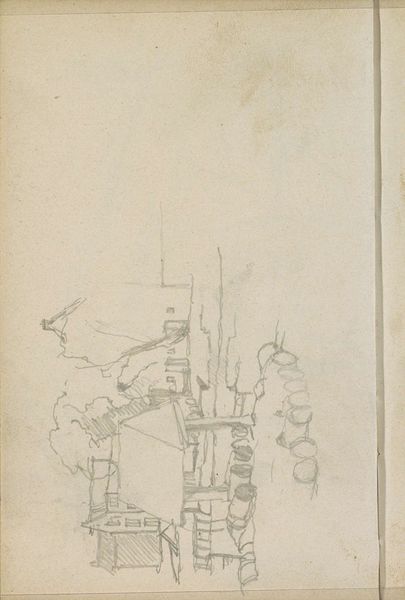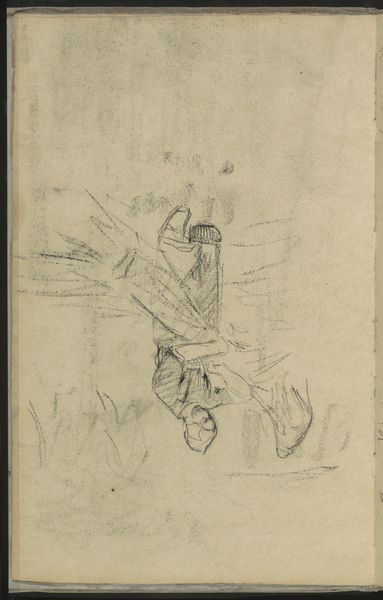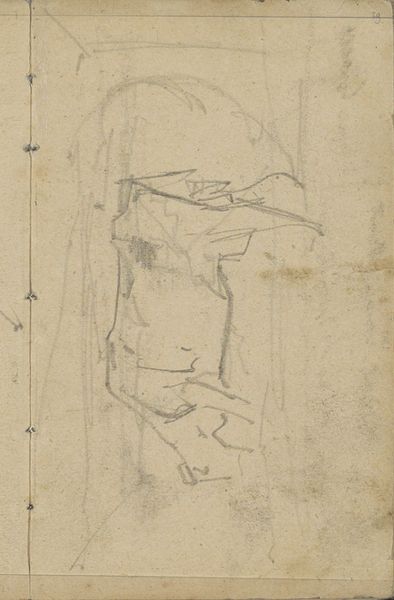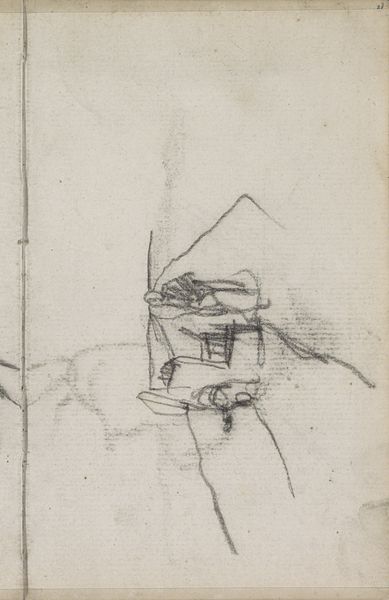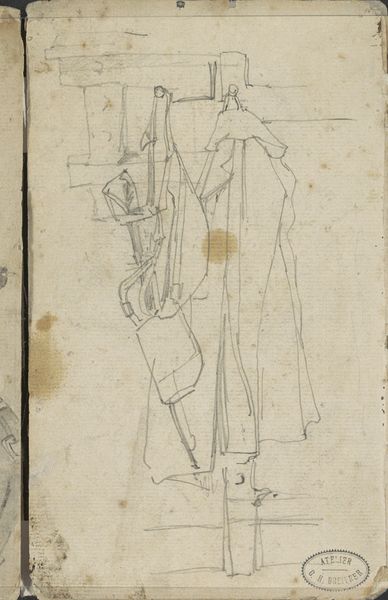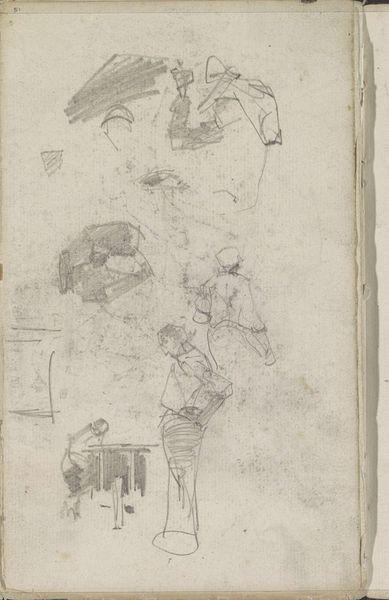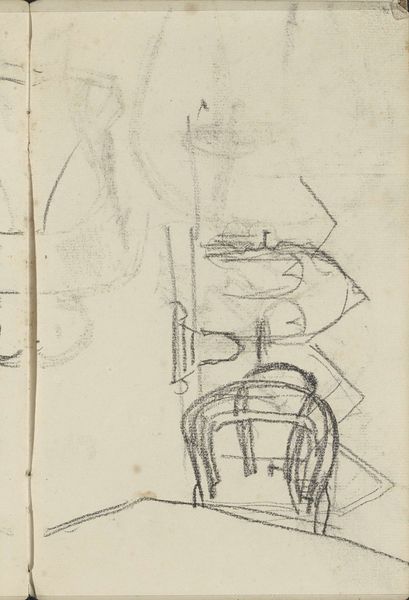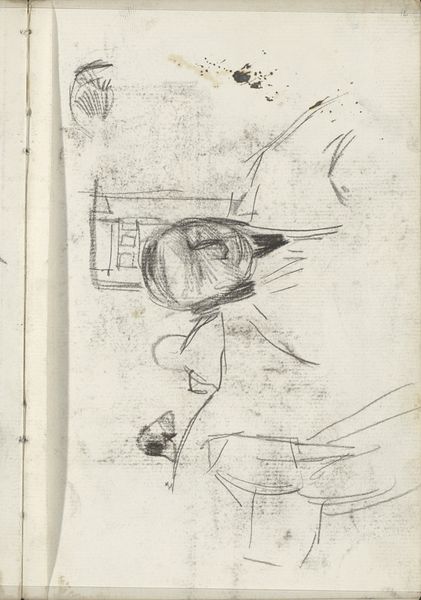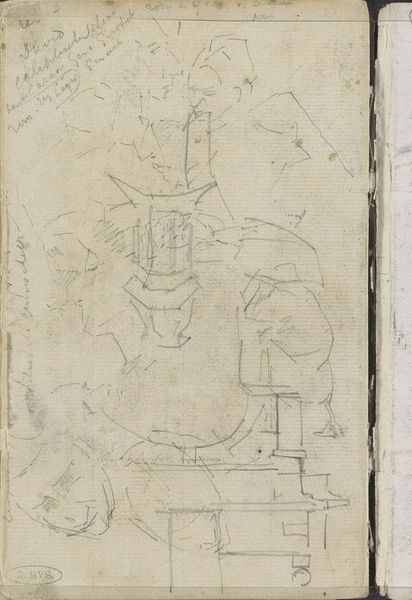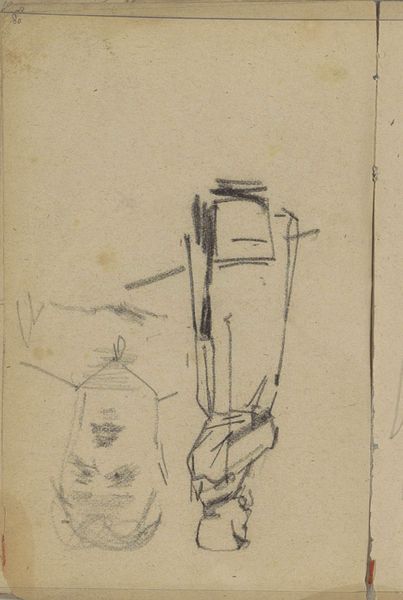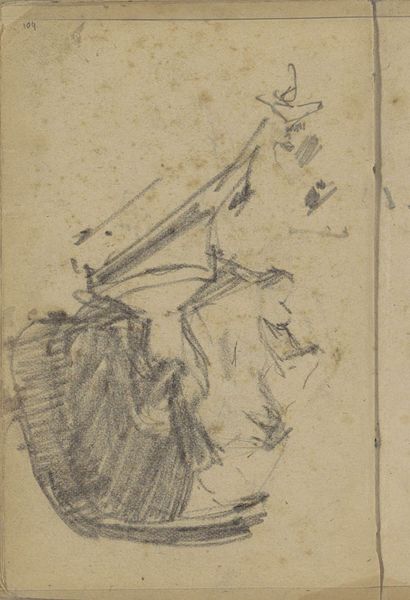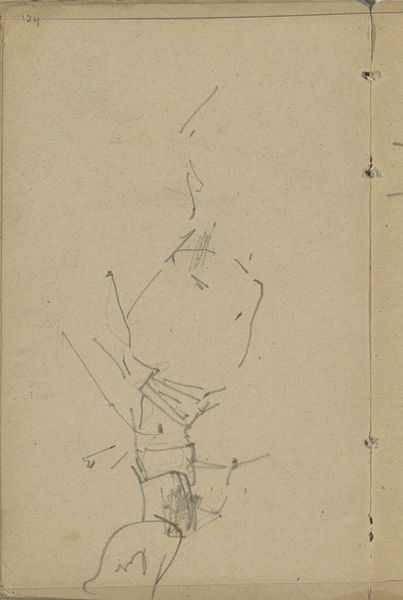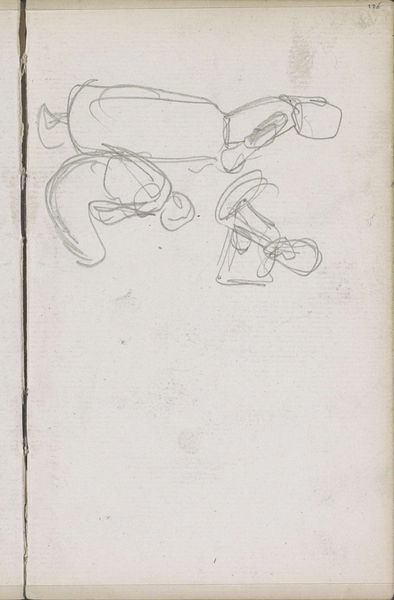
drawing, pencil
#
drawing
#
imaginative character sketch
#
quirky sketch
#
figuration
#
personal sketchbook
#
idea generation sketch
#
sketchwork
#
ink drawing experimentation
#
pen-ink sketch
#
pencil
#
sketchbook drawing
#
storyboard and sketchbook work
#
sketchbook art
Copyright: Rijks Museum: Open Domain
Curator: Alright, so, staring back at us is a quick sketch called "Man in wapenrusting en een helm"—that’s "Man in Armor and a Helmet" in Dutch. George Hendrik Breitner probably dashed this off sometime between 1883 and 1885. Editor: It looks more like he exploded this onto the page. It’s so raw and energetic, a real clash of metal and movement. Curator: Breitner was no stranger to capturing raw movement—horses were one of his obsessions. The dynamism in this sketch really comes through, doesn't it? Note how the light glances off the curves, hinting at the helmet’s depth and the metallic texture. Editor: I see how the composition is primarily driven by strong diagonal lines. The helmet and shoulders lean heavily, giving a real sense of instability, as if about to topple over or charge into action. The minimal shading almost abstracts the figure, forcing us to reconstruct the form ourselves. Curator: Exactly. It makes you wonder what the story behind it might be, doesn’t it? A prop from his studio perhaps? Breitner often explored modern life. Editor: Or perhaps an exercise in form? Breitner’s focus seems less about historical accuracy and more about how lines can define shape and volume. This isn't necessarily about the man, but rather about the armor as pure sculptural form. Curator: Hmm. But look at the detail in the joints and edges. Those clipped contours bring structure. And consider the quickness of the marks—you see it in his later photographs. Editor: Point taken! It is undeniably economical. Still, even in a brief study like this, Breitner is already laying bare the scaffolding, isn't he? Exposing the essential framework that lends visual impact. It’s almost Brutalist in its honesty! Curator: A Brutalist knight! I love it! I mean, the lack of sentiment is evident—there's no story, just lines on paper and the echo of a figure ready for something we will never know! Editor: Indeed. Well, in its rawness and its embrace of structure over sentiment, there's a lasting appeal. It transcends mere historical documentation, wouldn’t you agree?
Comments
No comments
Be the first to comment and join the conversation on the ultimate creative platform.

